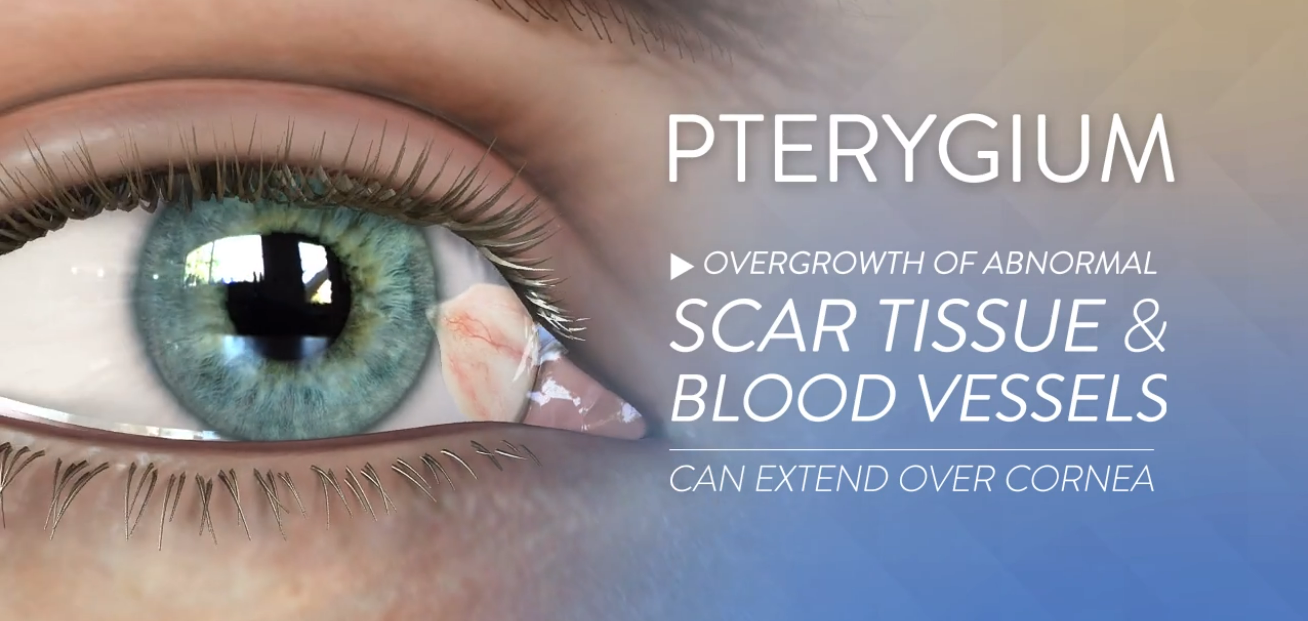Have you looked in the mirror and seen a pinkish growth on your eye? Is it painful at times? Does it cause you to tear up excessively as if you are crying?
What you are experiencing is probably something called pterygium.
One of our renowned ophthalmologists, Justus W. Thomas, M.D., had the pleasure of meeting with ABC13 News and anchor, Rita Garcia, to discuss more on this common eye condition.
WHAT IS A PTERYGIUM?
The Houston area falls in what is referred to as the pterygium belt, where we are more exposed to UV rays from the sun compared to other parts of the country and pterygium, also known as surfer’s eye, is a pink, non-cancerous tissue growth, on the white part of the eye (conjunctivae) that contains blood vessels.
WHAT ARE THE SYMPTOMS OF A PTERYGIUM?
Pterygia occurs on the surface of the eye, originating from the conjunctiva before spreading to the cornea. They are frequently symptomless at first, with many patients complaining of issues related to cosmetic appearance rather than any painful or irritating symptoms. A pterygium usually needs to grow before symptoms occur. Symptoms include redness and/or swelling of the white part of your eye, burning, tearing, and/or blurry vision.
CAN PTERYGIUM AFFECT MY VISION?
Sometimes small-scale pterygia can cause astigmatism, which can change your vision. On a larger scale, pterygia can grow to cover over your pupil, which can end up blocking your vision.
PTERYGIUM CAUSES
The exact cause of pterygium is unknown, although there is evidence that shows it may be partly correlated to over-exposure to UV light, dust, wind, and dry conditions.
PTERYGIUM PREVENTION
If you are outside, we recommend to always wear polarized sunglasses to protect your eyes from UV rays. Daily use of artificial tears can keep your eyes moist and flush out any irritants.
TREATMENTS FOR PTERYGIUM
American Academy of Ophthalmology (AAO) states, “in some cases, doctors may prescribe artificial tears or temporary steroid drops to slow or treat any discomfort. In cases where surgery is recommended, a surgeon and the patient will discuss the different options available to remove the pterygium and then reconstruct the ocular surface”.
Surgical techniques can vary depending on the size, the level of the remaining ocular tissue, availability of grafting tissue, intraoperative medical treatments, and more. The recovery period is typically one to two weeks and you will likely be on postoperative eye drops for two to three months. Although pterygia can recur even after surgical removal, practicing the avoidance techniques can help prevent them from returning.
PTERYGIUM CARE AT HOUSTON EYE ASSOCIATES
If you are experiencing any of these symptoms, you may have pterygium. We recommend talking to an ophthalmologist about your options.
Now for the legal disclaimers we all enjoy. This blog is for informational purposes only. For specific medical questions, please consult your eye care provider. You can schedule an appointment with a Houston Eye Associates ophthalmologist by calling 713-668-6828.

